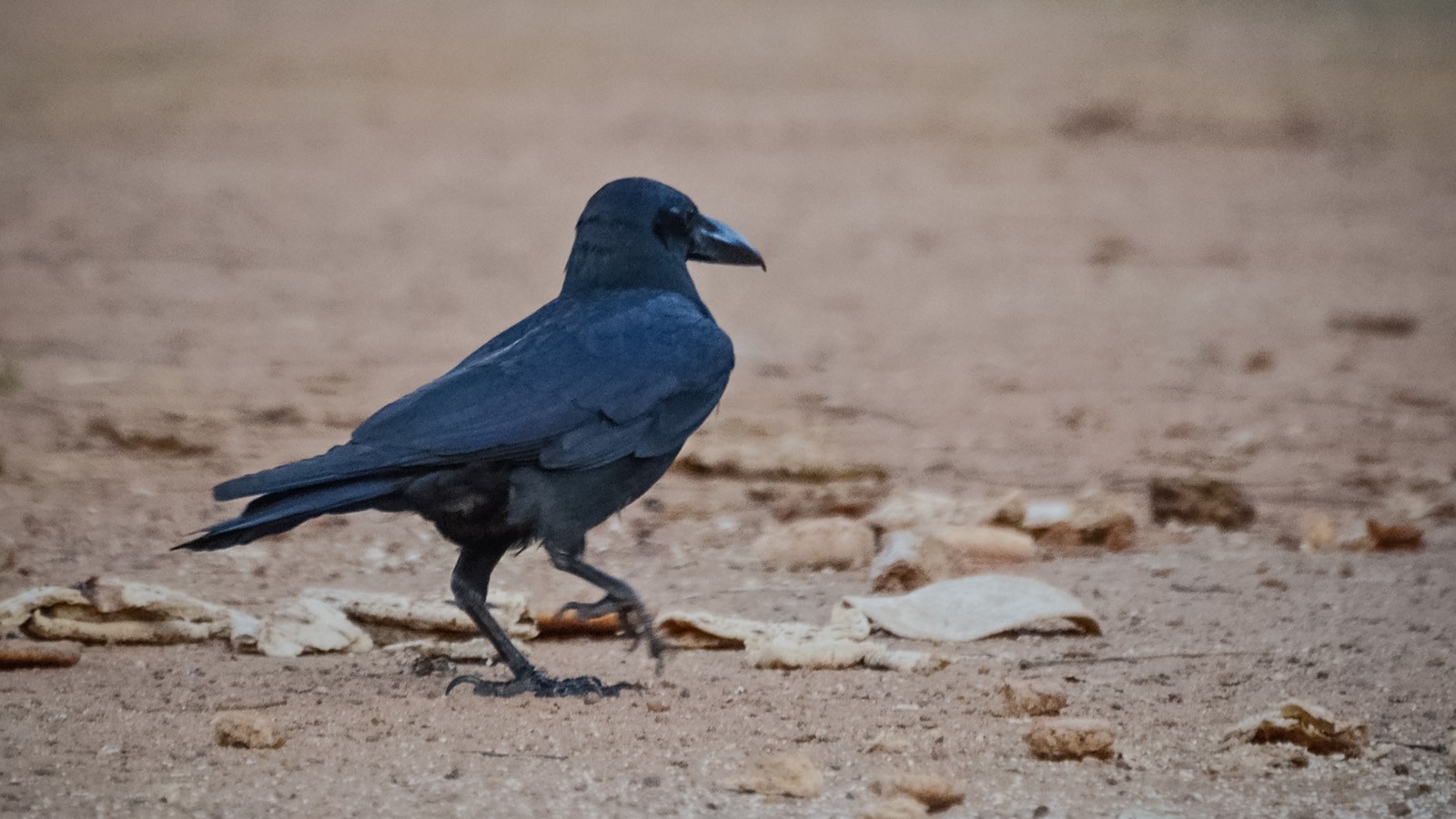Indian Jungle Crow
A species of Crows Scientific name : Corvus culminatus Genus : Crows
Indian Jungle Crow, A species of Crows
Botanical name: Corvus culminatus
Genus: Crows
Content
Description General Info
 Photo By Manish Kumar , used under CC-BY-SA-4.0 /Cropped and compressed from original
Photo By Manish Kumar , used under CC-BY-SA-4.0 /Cropped and compressed from original Description
This glossy all-black crow has a heavy black bill but without an arching culmen (upper edge of the mandible) and has a fine tip. The feathers have a purple gloss throughout. The tail of the Indian jungle crow is rounded and the legs and feet are stout. The base of the nape feathers is dusky. The Himalayan japonensis (in this sense including western intermedius and eastern tibetosinensis) has a slightly wedge-shaped tail and a voice is a guttural and grating graak (intermedius) or a hoarse kyarrh (tibetosinensis). The calls of the Indian jungle crow are not unlike that of the house crow, but are harsher. In Sri Lanka, the house crow lacks the light grey neck, but the neck is slimmer than in the jungle crow. The sexes are indistinguishable. 
Nest Placement
Tree
Dite type
Omnivorous
General Info
Feeding Habits
Bird food type
Behavior
The Indian jungle crow is resident throughout its range. It is usually seen singly, in pairs or small groups. It is an opportunist and generalist omnivore. They may soften their food by dropping them in water, and have also been observed to eat sand after feeding on meat from a carcass. They have a range of cawing vocalizations. It sometimes flies with special flight styles, hoarse calls in flight or when perched with a puffed throat and accompanied by bowing movements of the head and tail dipping. The behavioural significance of these calls and postures is unknown. The breeding season is mainly March–April in northern India and earlier in southern India. In Sri Lanka, it is from May-July. The nest is a platform of twigs placed in a large tree and very rarely on buildings. The centre of the nest is neatly lined with hair, coir or other fine fibres. The usual clutch is three to five pale blue-green eggs speckled with brown. The eggs hatch after about 17–19 days and the young fledge in about a month. The nests are sometimes parasitized by the Asian koel, although not as frequently as the house crow. 
Distribution Area
The Indian jungle crow is found across mainland India south of the foothills of the Himalayas, east of the desert regions of northwestern India and having an eastern limit around Bengal. It is also found in Sri Lanka. 
Scientific Classification
Phylum
Chordates Class
Birds Order
Perching birds Family
Crows and jays Genus
Crows Species
Indian Jungle Crow